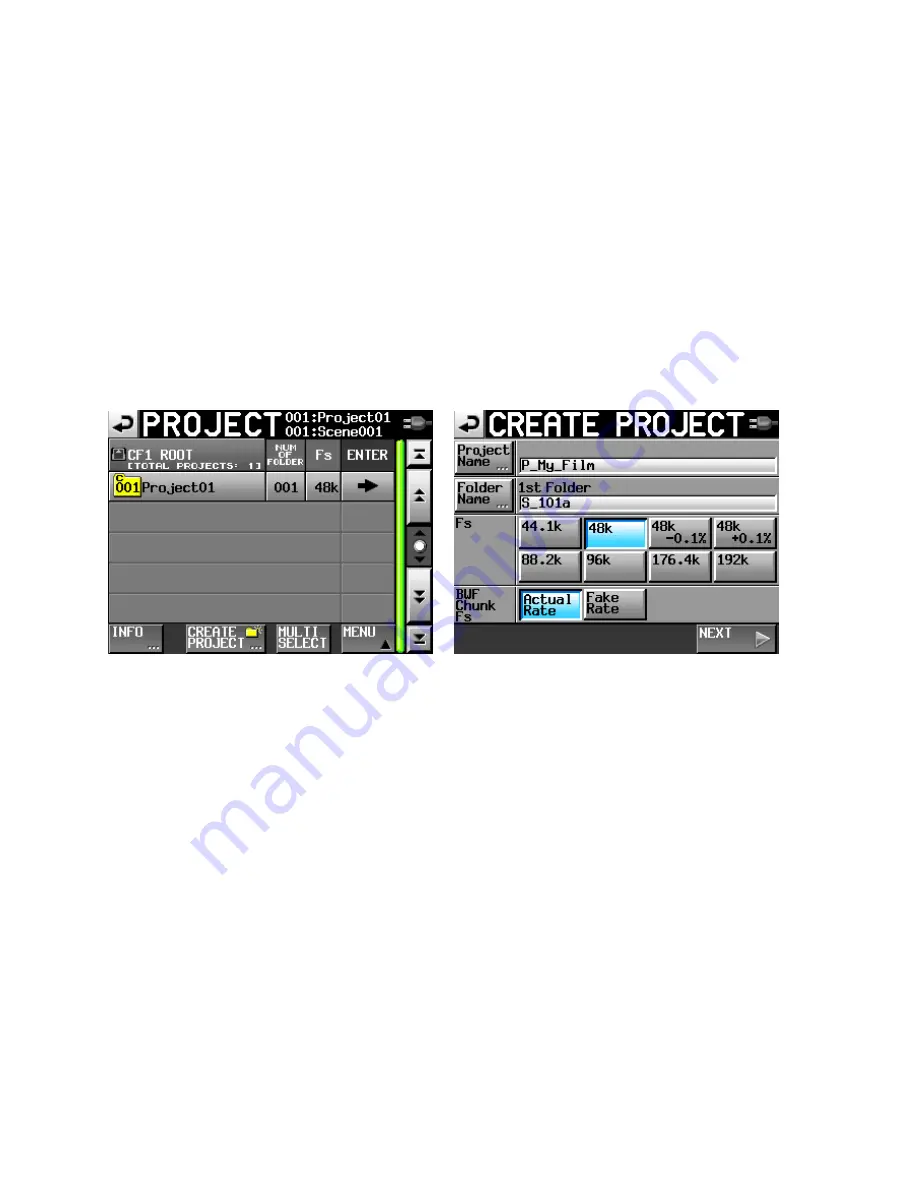
Page
5
of
29
Reference Level:
These settings do two functions. Not only do they set the record level of the tone
generator (which is normally set to -20dB), but it also controls the level for your analog “line level input”
such as when you plug in an external mixing panel. So in practice, you would select the -20dB button for
recording tone, but later you may need to select a higher setting if you need more gain from the line
level inputs. (This will most likely be corrected in a later firmware software release.)
Set the internal clock and date by selecting the tab at the bottom of the screen. Just press any of the
displays to adjust the numbers shown.
Create a PROJECT
A project is essentially the name of your film or video, along with the basic recording format. It is
possible to host multiple projects on the same CF card, even if those projects use different formats.
Press
PROJECT
button. Select
Create Project
tab at bottom of screen.
Press the tab on the left to NAME your
project
. DO NOT use the whole word “project” in your new
name; it is too long and will not always be displayed! Just abbreviate it as
P_ name
. (letter P,
underscore, brief name or number). Example:
P_My_ Film
Press the tab on the left to NAME your
folder
. Note that TASCAM uses the term “folder” for what we
would call “scene” in filmmaking. On the Tascam, you store all of your takes for each scene inside of that
scene folder. It is a very organized way of keeping track of stuff!
DO NOT use the whole word “scene” in your new folder name; it is too long! Just abbreviate it as
S_
number
. (letter S, underscore, scene number/letter). Example: S_101A
Next, select the correct
Fs
(SAMPLING RATE) for your project. Most of the time, this will be 48k.
Sometimes, the post production people will ask for 96k. Depending on your video editing software, you
may even be asked to use 47.952 or 48.048, which are labeled as
48k
+/-




















